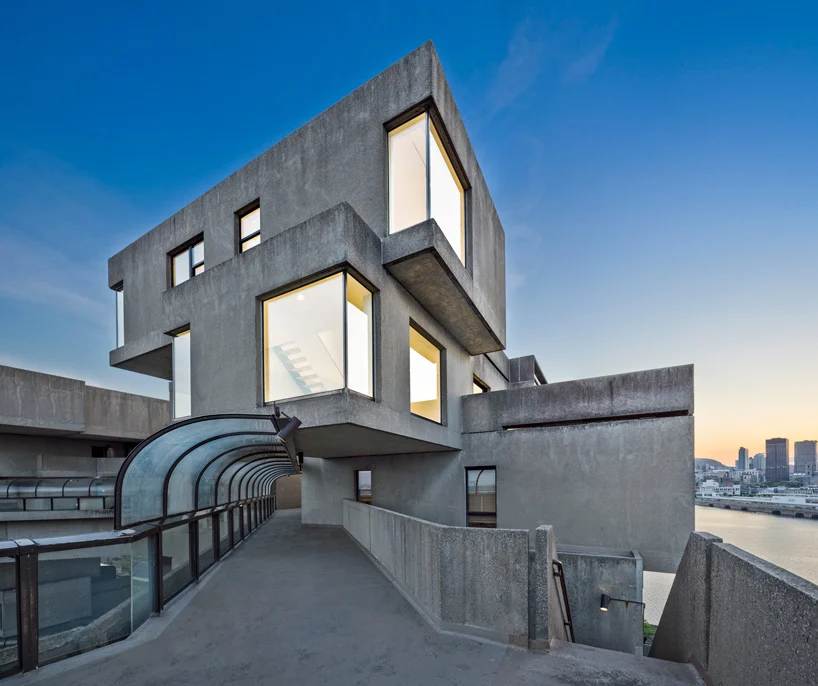Habitat 67 is a groundbreaking architectural marvel that has captivated the imaginations of design enthusiasts and curious minds alike. Nestled in the vibrant cityscape of Montreal, Canada, this iconic housing complex is as unique as it gets. With its unconventional structure and mesmerizing floor plan, Habitat 67 proudly embodies innovative thinking and urban living.
The Unique Floor Plan and Structure of Habitat 67
The floor plan of Habitat 67 is characterized by its innovative use of prefabricated concrete modules stacked on top of each other to create a series of interconnected units. Each unit features a private terrace or garden space, providing residents a slice of outdoor living. The modular design allows for flexibility in layout and configuration, resulting in a diverse range of unit sizes and configurations within the complex. This approach provides variety and creates an interesting visual composition when viewed from different angles.
Controversies Surrounding the Number of Floors in Habitat 67
One possible explanation for this controversy is the unique design and layout of Habitat 67. The building comprises a series of interconnected modules stacked on top of each other at different angles, creating an intricate puzzle-like structure. This unconventional arrangement can make determining where one floor ends and another begins difficult. Another factor contributing to the confusion is how people define a “floor.” Traditionally, a floor refers to a level with habitable space above ground level. However, in Habitat 67, some levels may not have full-height ceilings or contain living areas but instead serve as access points or outdoor terraces.
Final Verdict: How Many Floors Does Habitat 67 Have?
The structure consists of 354 individual prefabricated concrete units arranged in different configurations to form this architectural marvel. Each module serves as its separate unit with unique layouts and designs. To complicate matters further, some sources claim that there are only ten “official” floors in Habitat 67. In comparison, others argue for thirteen or even fourteen floors if you count all the different levels and mezzanines.
Other Interesting Facts About Habitat 67
- Iconic Architecture: One of the most fascinating aspects of Habitat 67 is its unique architectural design. The complex consists of interconnected concrete boxes, which create a striking visual appeal. This innovative approach to urban living was the brainchild of architect Moshe Safdie.
- Experimental Housing Concept: Built as an experimental housing project for Expo 67, Habitat 67 aimed to revolutionize urban living by providing affordable and efficient housing solutions. It showcased the potential for high-density living without sacrificing quality of life.
- Stunning River Views: Situated on the Saint Lawrence River in Montreal, Canada, Habitat 67 offers breathtaking views of the river and surrounding landscape. The strategic location adds to its allure and makes it a desirable place to live.
- Green Spaces and Gardens: Habitat 67 incorporates green spaces and gardens throughout its design despite being a concrete structure. These pockets of nature provide residents with tranquil areas to relax and connect with nature amidst the bustling city environment.
- International Recognition: Since its completion in 1967, Habitat 67 has garnered international acclaim for its architectural significance and contribution to modernist design principles. It has been featured in numerous publications worldwide and continues to inspire architects around the globe.
A History of Habitat 67
Habitat 67 has undoubtedly left an indelible mark on the architectural landscape, serving as a testament to the innovative design and vision of its creator, Moshe Safdie. Since its completion in 1967 for Expo 67, this iconic housing complex has captured the imaginations of people around the world. Over the years, Habitat 67 has become more than just a residential building; it is now considered a symbol of Montreal’s rich cultural heritage and a landmark in modern architecture. Its unique modular design and bold vision have made it a source of inspiration for architects and urban planners alike.





